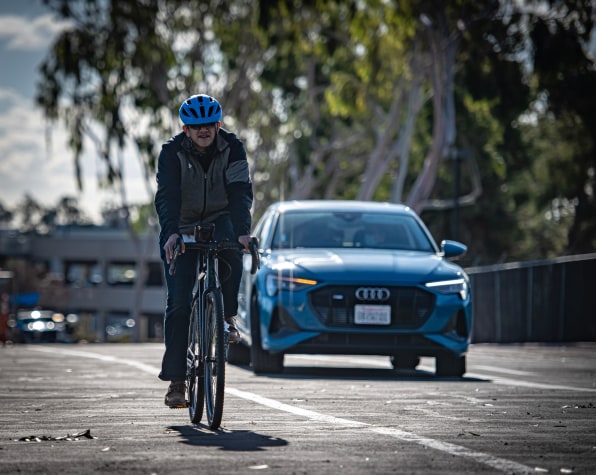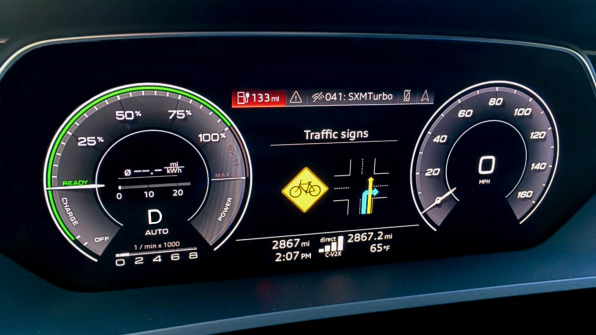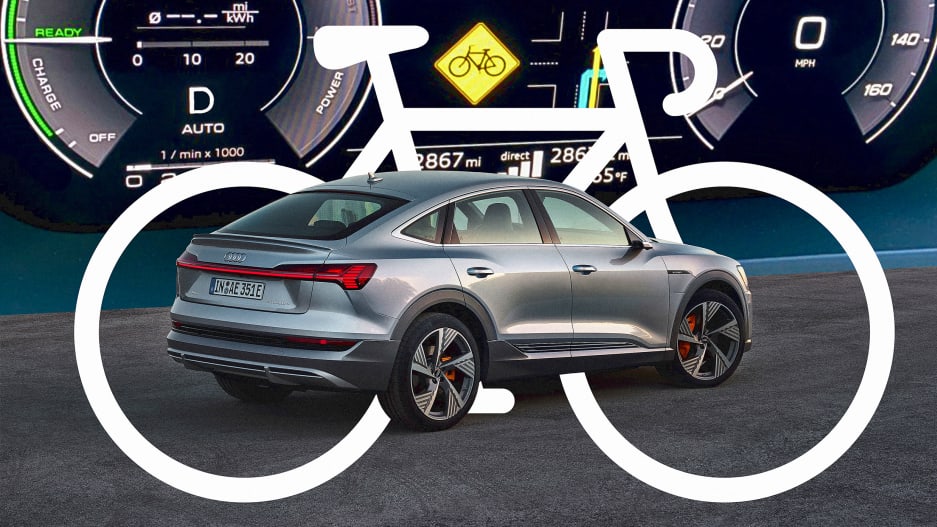The modern car comes with a cacophony of warnings. New vehicles are outfitted with a wide range of sensors and safety features that can warn drivers when they’re veering from a lane, when a car is in their blind spot, or when they’re about to rear-end the car in front of them. These safety features have been found to reduce the risk of death for car occupants by more than 60% compared to cars from the 1980s, according to one study.
But for those outside a vehicle—like people riding bikes, walking to school, or working on roadside construction sites—cars are deadlier than ever.

[Photo: Audi]
Audi is hoping to change that. The company is adding yet another warning system to its vehicle dashboards that will help drivers avoid hitting so-called vulnerable road users. In partnership with the mobility safety company Spoke, wireless technology company Qualcomm, and vehicle communication company Commsignia, Audi is focusing specifically on a system that warns drivers when they get too close to cyclists. Crucially, however, this system will work only when cyclists also have the technology on their bikes—making this a hard sell for widespread adoption and prevention.“The driver will see if there’s a bicyclist behind them, on the left or right side of the road, in front of them, and the vehicle will also warn if there’s an impending incident,” says Anupam Malhotra, Audi’s senior director of connected services. “So if you’re suddenly going to change lanes or make a turn and there’s a bicyclist who will get hit as a result of that, it will create a warning.”

[Photo: Audi]
Using what’s known as cellular vehicle-to-everything technology, or C-V2X, the system will automatically enable communication between cars and non-vehicle road users, providing warnings directly on drivers’ dashboards. For example, drivers would see a large yellow emblem showing a bicycle and its pathway in relation to the car. If cyclists have the corresponding technology, they will also be warned when a car is coming into their path.Audi isn’t the first to tackle this challenge. In 2020, Volvo announced its own effort to improve the way its vehicles detect and avoid cyclists, pedestrians, and motorcyclists. The need is clearly growing. The National Highway Traffic Safety Administration’s most recent data, from 2019, showed 49,000 on-road cycling injuries, a 4.3% increase from the year before. Nearly 850 of those accidents were fatal, a 36% increase from 2010. And the National Roadway Safety Strategy report released by the Department of Transportation in January showed that compared to fatalities among car occupants, pedestrian and cyclist fatalities have been increasing at a faster rate over the past decade.
The big wrinkle in Audi’s system is the fact that it relies on radio-like technology to be embedded in both its cars and with cyclists or pedestrians. Malhotra says many bicycle manufacturers are already starting to build this technology into their products. In one test project Audi conducted with the Virginia Department of Transportation, these radio-like devices were implanted in the vests worn by road workers, helping to provide warning beacons to drivers passing by. “By 2030, there will be 65 million radios that cars can communicate with outside of other cars,” Malhotra says, citing internal research.
The bet at Audi is that many of those will be on vulnerable road users like cyclists. But with more than 43 million recreational bicycle riders in the U.S., there are a lot of radios to implant. For the most common vulnerable road user, the pedestrian, this type of device seems unlikely to ever be a solution.
Malhotra says the partnership with Spoke aims to bring this technology to more people, with a device cyclists can add to their bikes that will communicate with Audi’s safety system as well as those being implemented by other car manufacturers, which all operate on similar and compatible communications channels.
How many of the 43 million cyclists will go out of their way to buy one of these devices is unclear. Malhotra says creating these warning systems can help get at least some of them on board, but concedes these are early days for what is still novel technology, noting, “It’s a stepping stone.”









































